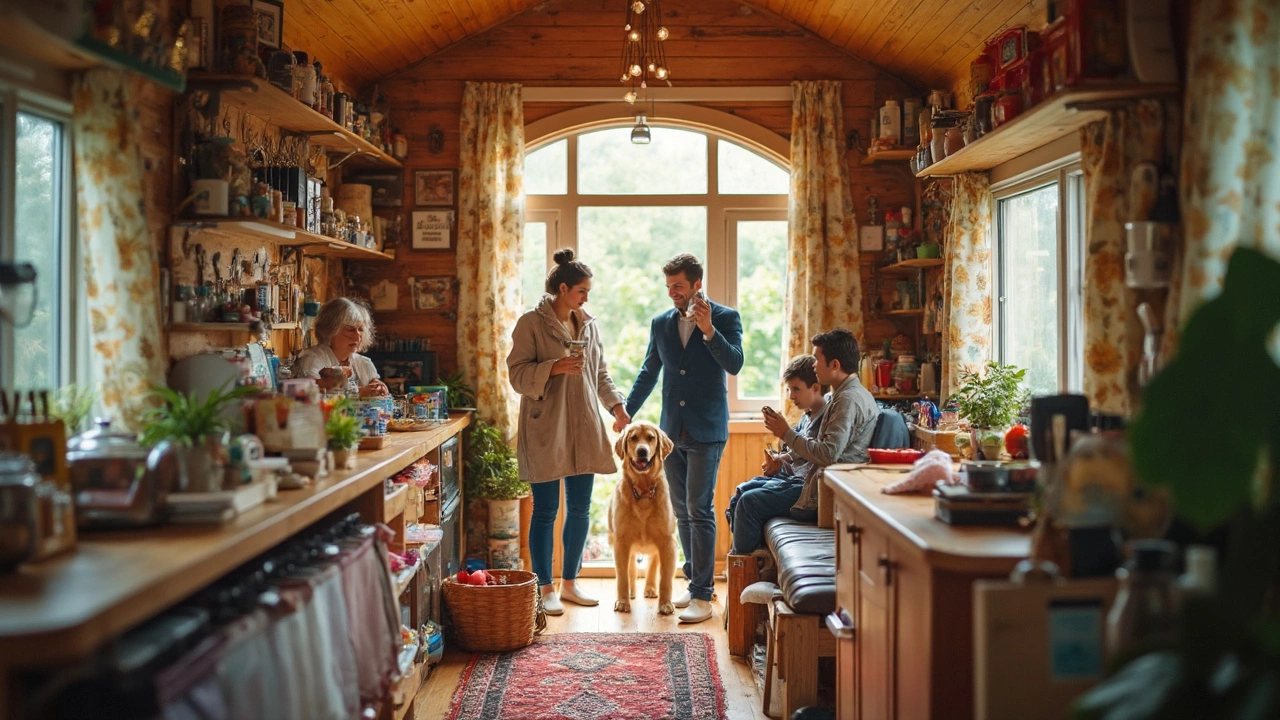Tiny House Drawbacks: Real Issues You Should Expect
If you love the idea of living small, you’ve probably heard the hype about tiny houses. They look cool, they’re eco‑friendly, and they can be cheaper than a big flat. But the reality has a few rough edges that most people only notice after they move in. Below we break down the biggest pain points so you can decide if a tiny home really fits your life.
Space and Comfort Limits
The most obvious drawback is the lack of space. You’re trading a spare bedroom or a roomy kitchen for a loft and a compact wet room. That means
• Storage is always a fight. You’ll need clever shelves, under‑floor boxes, and a habit of tossing things you don’t use daily.
• Entertaining gets tricky. Hosting friends means either setting up outside or squeezing everyone onto a tiny sofa. Many tiny owners end up using local cafés or parks for social gatherings.
• Privacy can disappear. With an open‑plan layout, sleeping, cooking, and working happen in the same visual field. If you’re used to separate rooms, you’ll notice the difference fast.
These issues aren’t impossible to manage, but they require constant planning and a willingness to keep things minimal.
Legal and Financial Hurdles
Building or buying a tiny house sounds simple, but zoning rules often throw a curveball. Many UK councils still classify a tiny house as a “caravan” or “mobile home,” which can limit where you can park it or force you to get a planning permission that costs extra.
• Land costs. You might find a cheap plot, but if the council won’t allow a permanent tiny home, you’ll need a lease or a special use permit.
• Insurance premiums. Insurers see tiny homes as higher risk for theft or damage, so the monthly price can be comparable to a regular house.
• Resale value. Tiny houses appeal to a niche market. When it’s time to sell, you may struggle to find a buyer willing to pay a price that recoups your investment.
When you add up the extra fees – planning, land, insurance, and possibly higher per‑square‑foot construction costs – the total can approach or exceed the price of a modest two‑bedroom property.
Beyond space and legality, living tiny changes daily habits. You’ll need to downsize possessions, get used to multitasking in tiny rooms, and accept that some luxuries – like a large bathtub or a walk‑in closet – are off the table. If you love cooking, the mini kitchen might force you to simplify meals or shop more often.
On the flip side, many owners report a boost in mindfulness, lower utility bills, and a stronger connection to the outdoors because they spend more time outside. The key is to weigh those gains against the constant compromises.
Before you commit, try a short‑term stay in a tiny house rental. Experience the space, the storage limits, and the local rules firsthand. If you find yourself constantly rearranging furniture or wishing for a spare wall, the drawbacks may outweigh the benefits.
Bottom line: tiny houses can be a fun experiment, but they’re not a universal solution. Make sure the space constraints, legal hurdles, and resale reality fit your lifestyle and budget before you sign any contracts.
Biggest Drawbacks of Tiny House Living: What You Need to Know
Thinking about moving into a tiny house? This article lays out the real challenges you might run into, from space crunches to storage nightmares. Discover how tiny houses can turn daily routines upside down, especially if you have kids or pets. Learn from real-life examples, and get practical tips on handling the less glamorous side of eco-friendly living. If you're dreaming about downsizing, here's what you should know before taking the leap.
